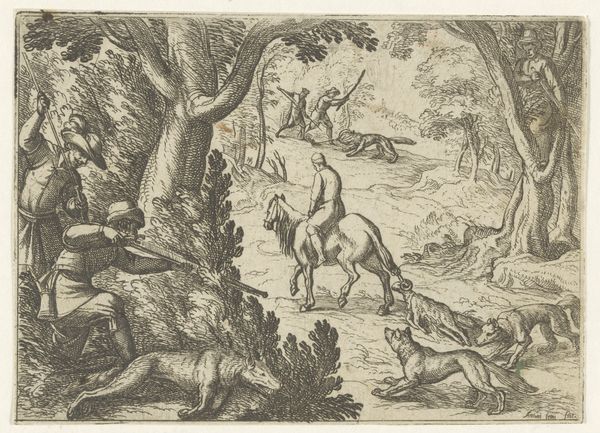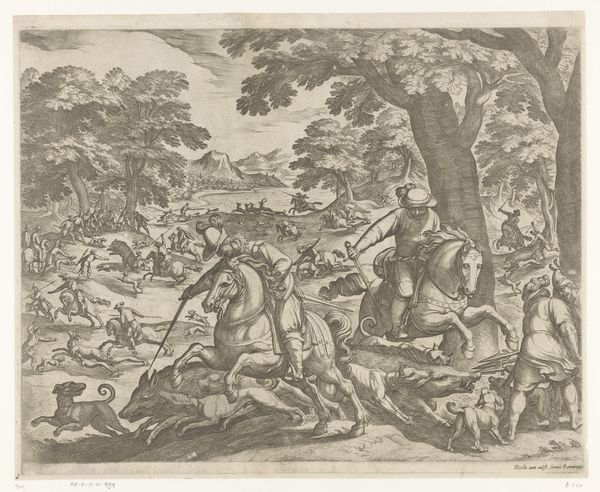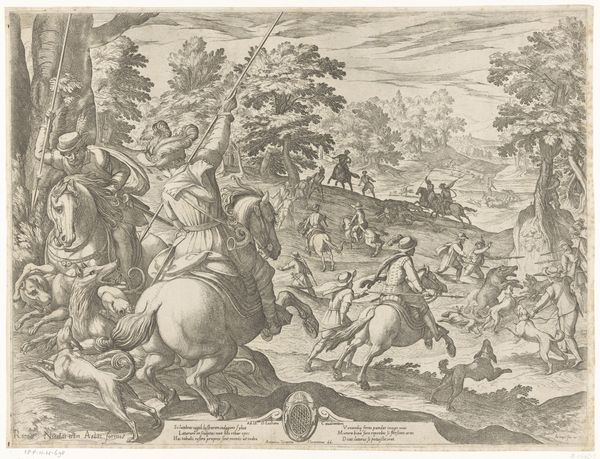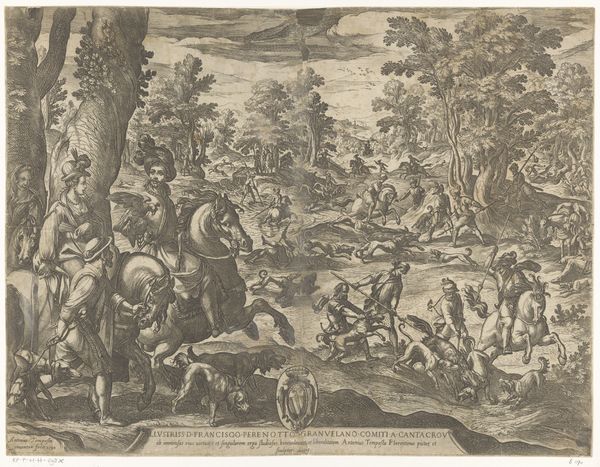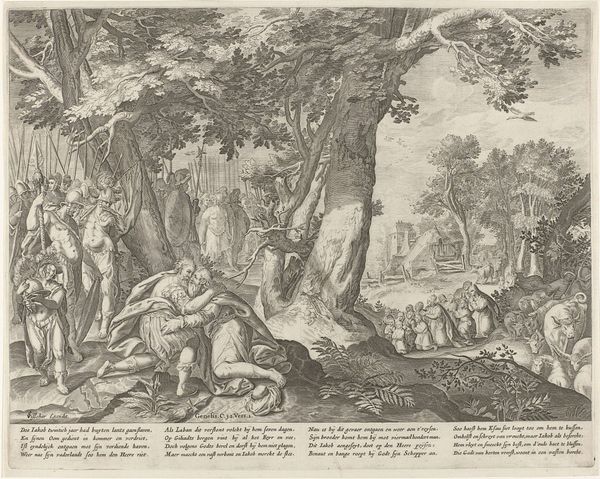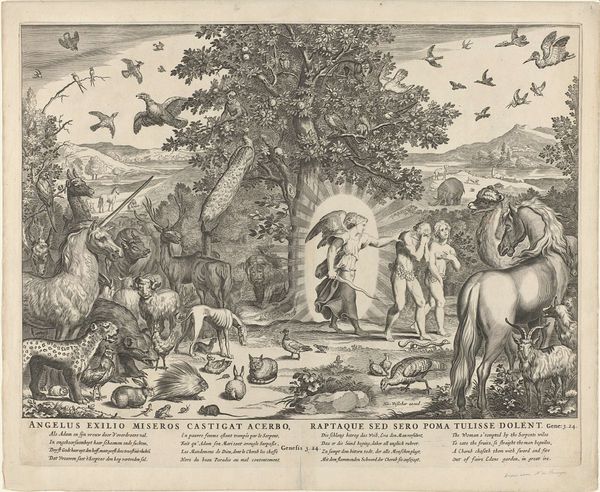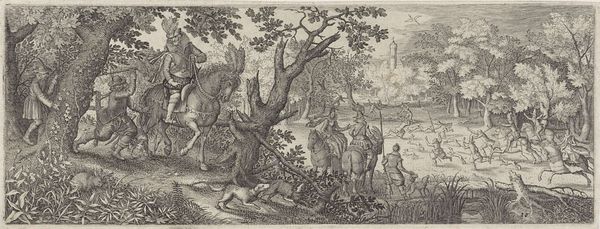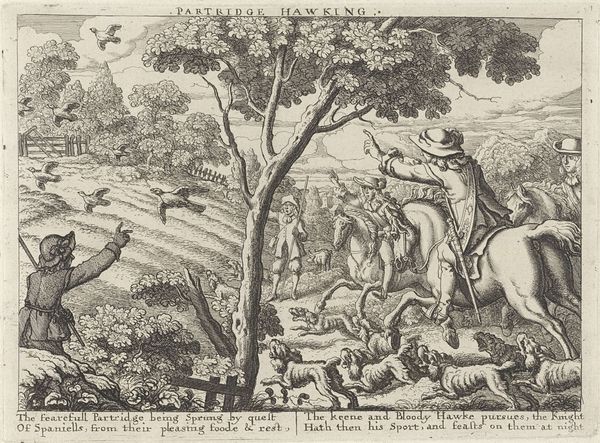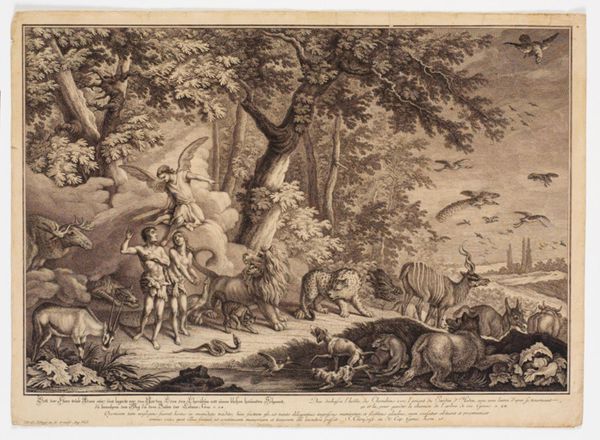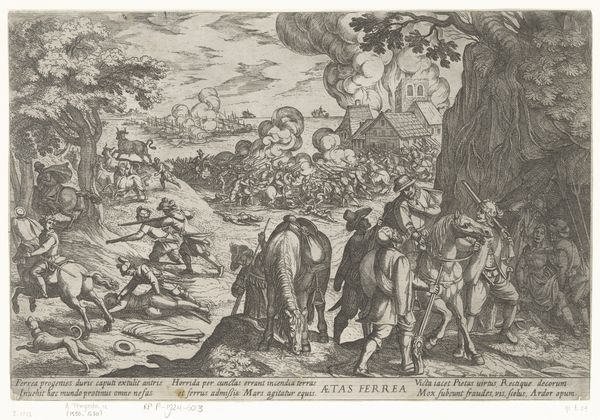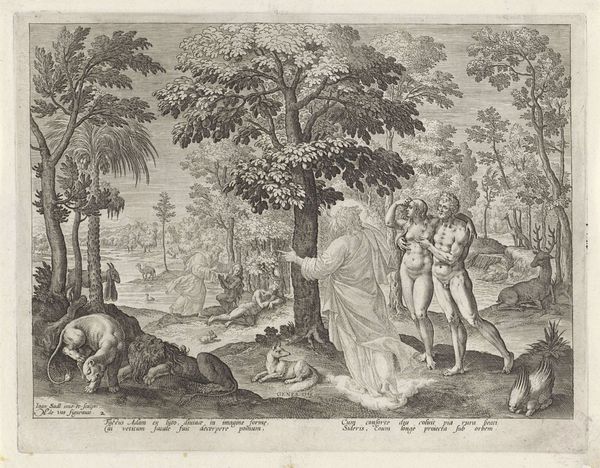
engraving
#
baroque
#
pen drawing
#
old engraving style
#
landscape
#
figuration
#
history-painting
#
engraving
Dimensions: height 430 mm, width 513 mm
Copyright: Rijks Museum: Open Domain
Editor: This is "The Death of Absalom," a possibly seventeenth-century engraving by an anonymous artist, now at the Rijksmuseum. The detail is incredible. The chaotic battle scene juxtaposed against the seemingly indifferent landscape feels so charged. What are your initial thoughts on this piece? Curator: The use of engraving is very revealing here. Think about the labor involved: the meticulous carving into the metal plate, the deliberate act of reproducing an image through a mechanical process. It speaks to a desire for wider dissemination of the story, turning it into a commodity, an image reproduced for consumption. Editor: That's interesting. So, you’re focusing on the engraving process itself, rather than just the image it depicts? Curator: Exactly. How does this relate to the social context? These prints weren't just for the wealthy. They brought biblical stories into homes, fostering a sense of shared identity, but also potentially reinforcing power structures and hierarchies. Editor: I hadn't thought about it that way. It's easy to get caught up in the dramatic scene itself – the battle, Absalom hanging from the tree, and miss the role of the physical object, and its wider impact as a distributed, reproduced artefact. Curator: And notice the contrast: Absalom, literally suspended, caught between earthly and divine judgment, depicted via the very grounded and material process of engraving. Where does the artist stand here, what message do you think is being created? Editor: So, thinking about it as a commodity changes everything. I will not consider art the same way ever again. Thank you! Curator: Indeed, questioning the materials allows to consider all the surrounding messages. Always a rewarding angle!
Comments
No comments
Be the first to comment and join the conversation on the ultimate creative platform.
